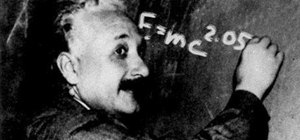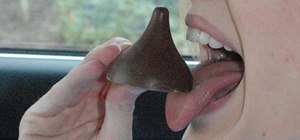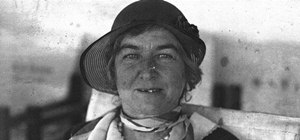Particles, such as electrons, have a property called spin which can be measured at any angle, but when measured always results in one of two answers—up or down.
If a particle's spin has been measured at an angle of zero degrees and results in a spin up answer, then if its spin is subsequently measured at an angle of theta, it will be up with probability cos(theta/2) squared.
Einstein was very troubled by this, and pointed out that due to the conservation of angular momentum, it is possible to have two entangled particles, A and B, such that whichever way the measurement of A's spin comes out, a measurement of B's spin will have the opposite result, no matter how far apart the particles are when the measurements take place.
Since information cannot travel faster than the speed of light from one particle to another, Einstein reasoned that the measurement results must be predetermined by some physical components of the particles of which we are not aware.
He called such components "hidden variables".
Imagine that each particle has an arrow that points in some direction between 0 degrees and 360 degrees. If the arrow is pointing within 90 degrees of the angle at which the particle's spin is measured, then the measurement will be up and otherwise down.
For example, if measuring the spin at 0 degrees and the arrow is between 0 degrees and 180 degrees, then a particle's spin will be measured as up, and if the arrow is pointing between 180 degrees and 360 degrees, the particle's spin will be measured as down.
Einstein reasoned that if particle A has an arrow in one direction while particle B has an arrow in the opposite direction, this would explain the fact that spin measurements on A and B always have yield results.
Now, suppose that particle A's spin is measured at 0 degrees and particle B's spin is measured at an angle theta. If you draw yourself a little picture, you'll see that the measurements will have opposite signs as long as A's arrow is not between 90 degrees and (90 degrees + theta) or between 270 degrees and (270 degrees + theta).
In other words, the probability that the particles will have opposite spins (up-down or down-up) with respect to their respective measuring devices will be equal to (1-theta/180).
For example:
- If theta is zero degrees, then the spin of both particles will be measured at the same angle and result in opposite measurements with probability one.
- If theta is 180 degrees, then the particles' spins will be measured in opposite directions and will therefore yield opposite results with probability zero.
- If theta is 90 degrees, then there will be a 50-50 chance that the particles have opposite measurements, because once A's spin is measured as either up or down, then B's spin will have a 50% chance of being measured to the right.
- Finally, if theta is 45 degrees, then there will be 75% chance that the particles will both be measured up with respect to their respective measuring devices.
This is all fine, except for one small problem—according to quantum mechanics, the probability that the particles will have the opposite measurements with respect to their different measuring devices is the square of cos(theta/2), not (1-theta/180). This was pointed out by John Bell in 1964 and tested by Alain Aspect in 1982.
Aspect's results clearly show that Einstein was wrong; not only does God play dice, but reality is not local. So, if you think you are beginning to comprehend what a bizarro world we live in, think again.
Reference:
- "The Quantum Theory and Reality", 1979 article by Bernard d'Espagnat in Scientific American.
Just updated your iPhone? You'll find new emoji, enhanced security, podcast transcripts, Apple Cash virtual numbers, and other useful features. There are even new additions hidden within Safari. Find out what's new and changed on your iPhone with the iOS 17.4 update.


































Be the First to Comment
Share Your Thoughts